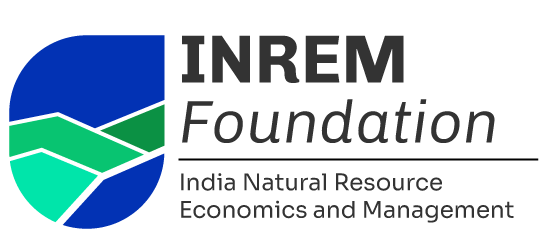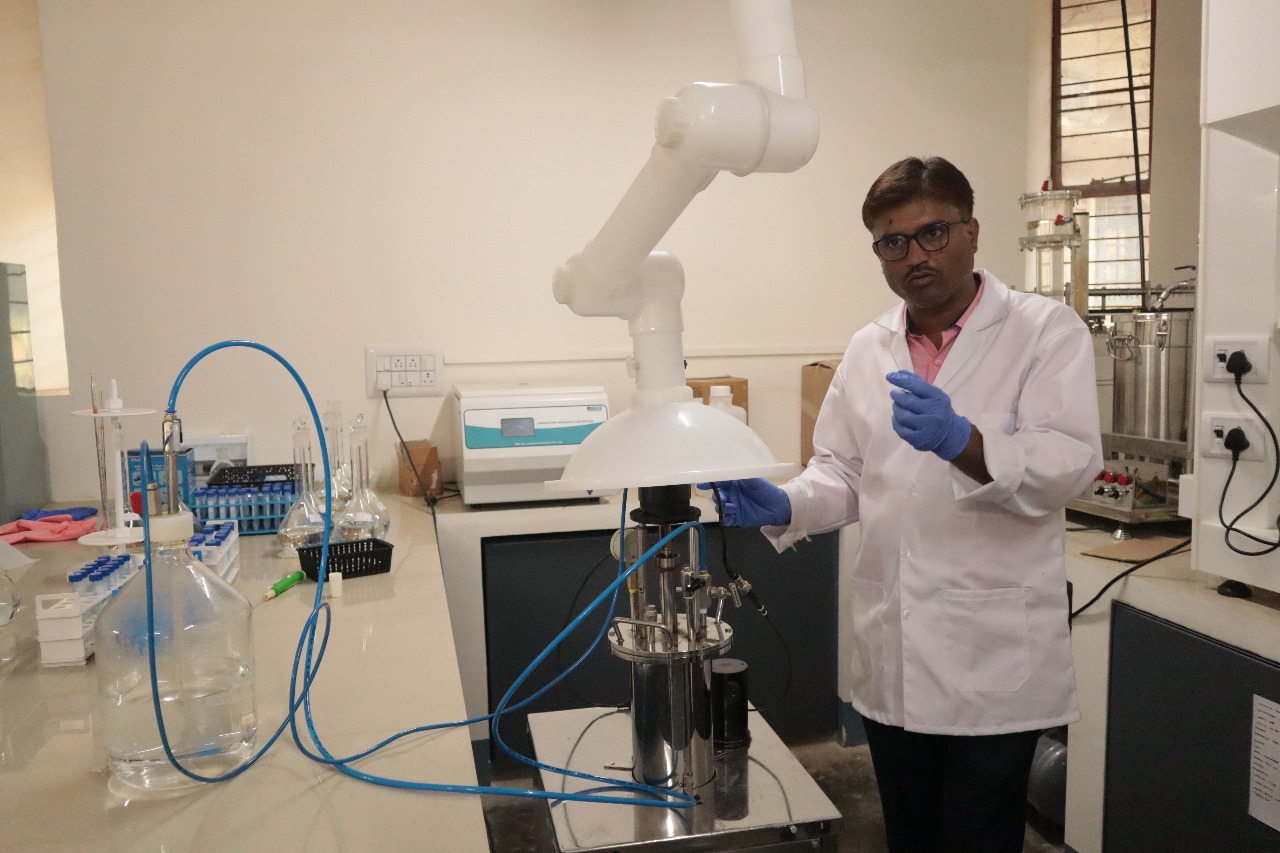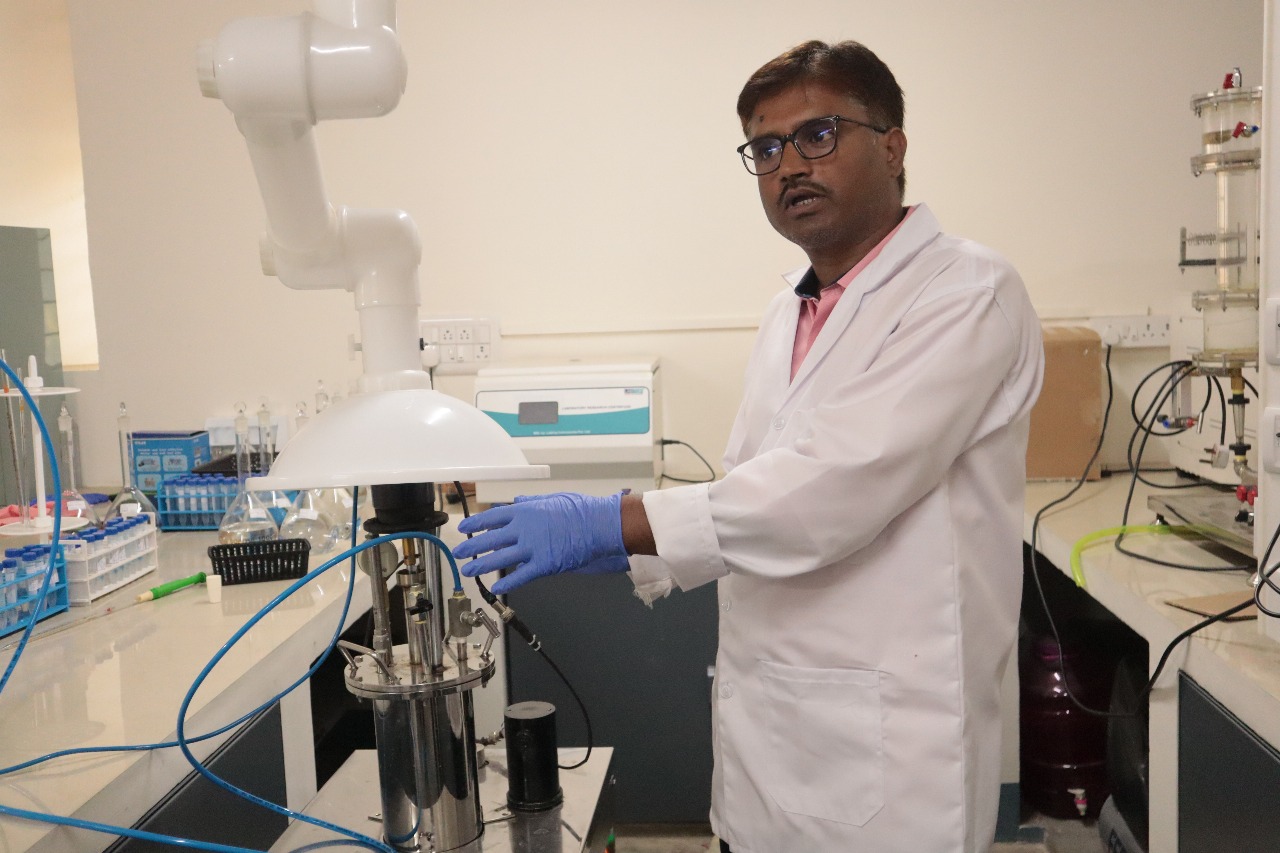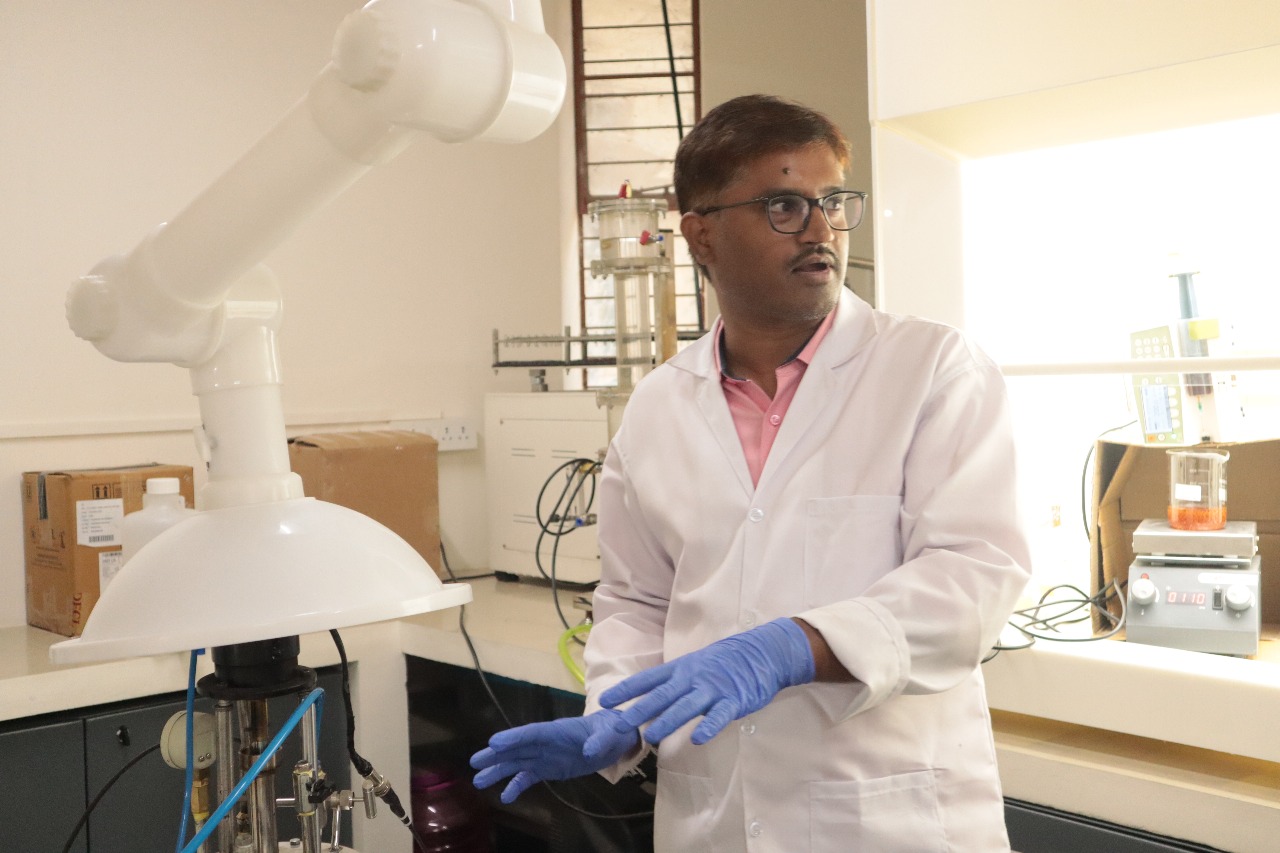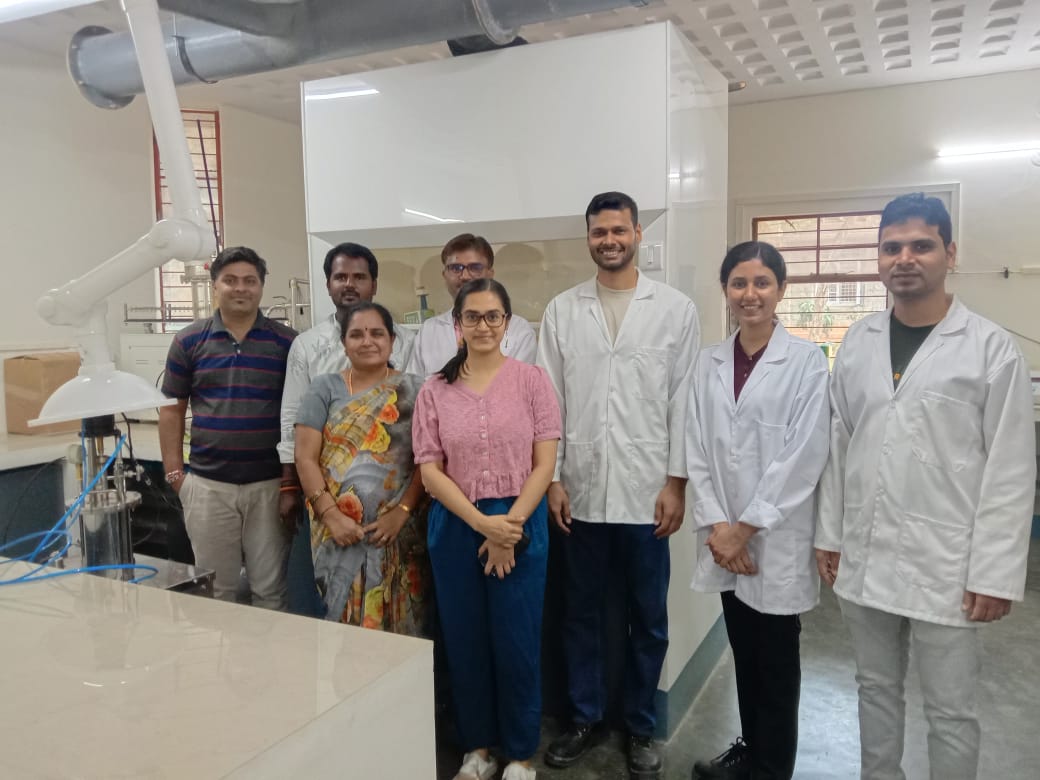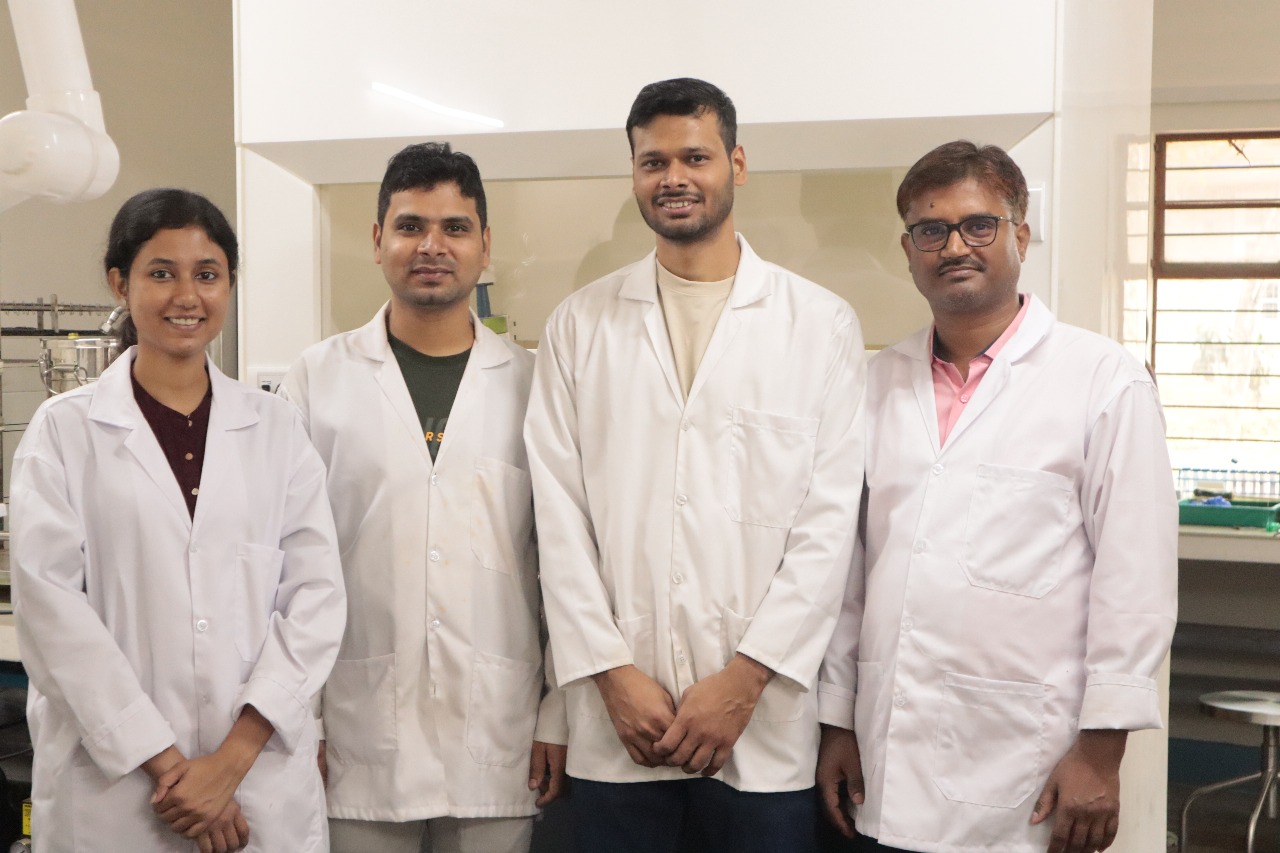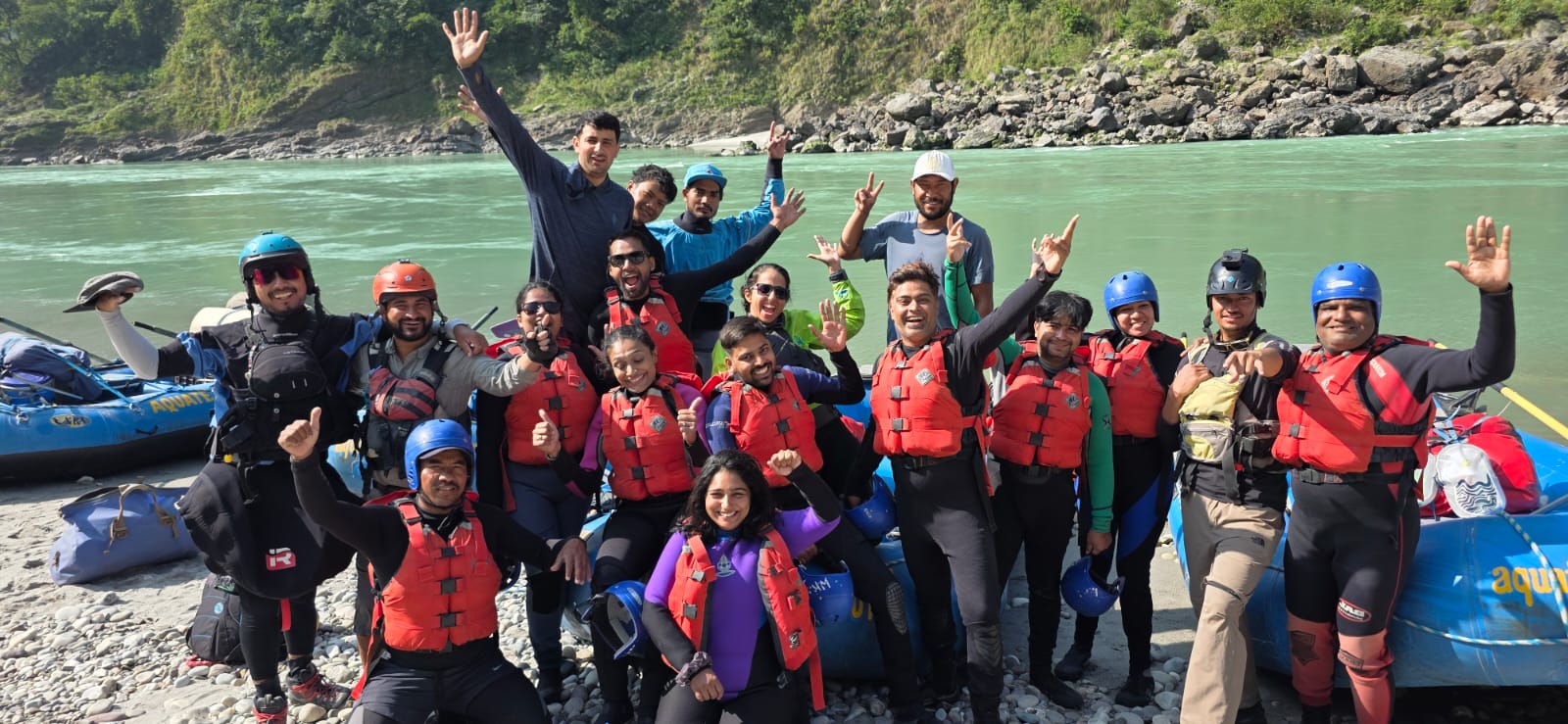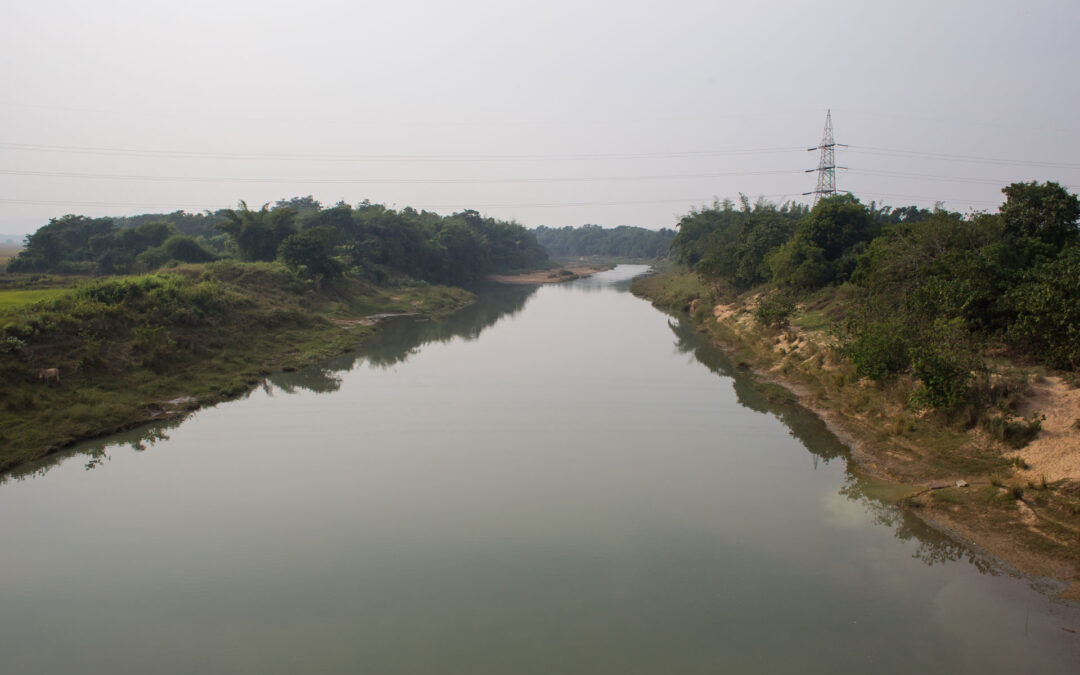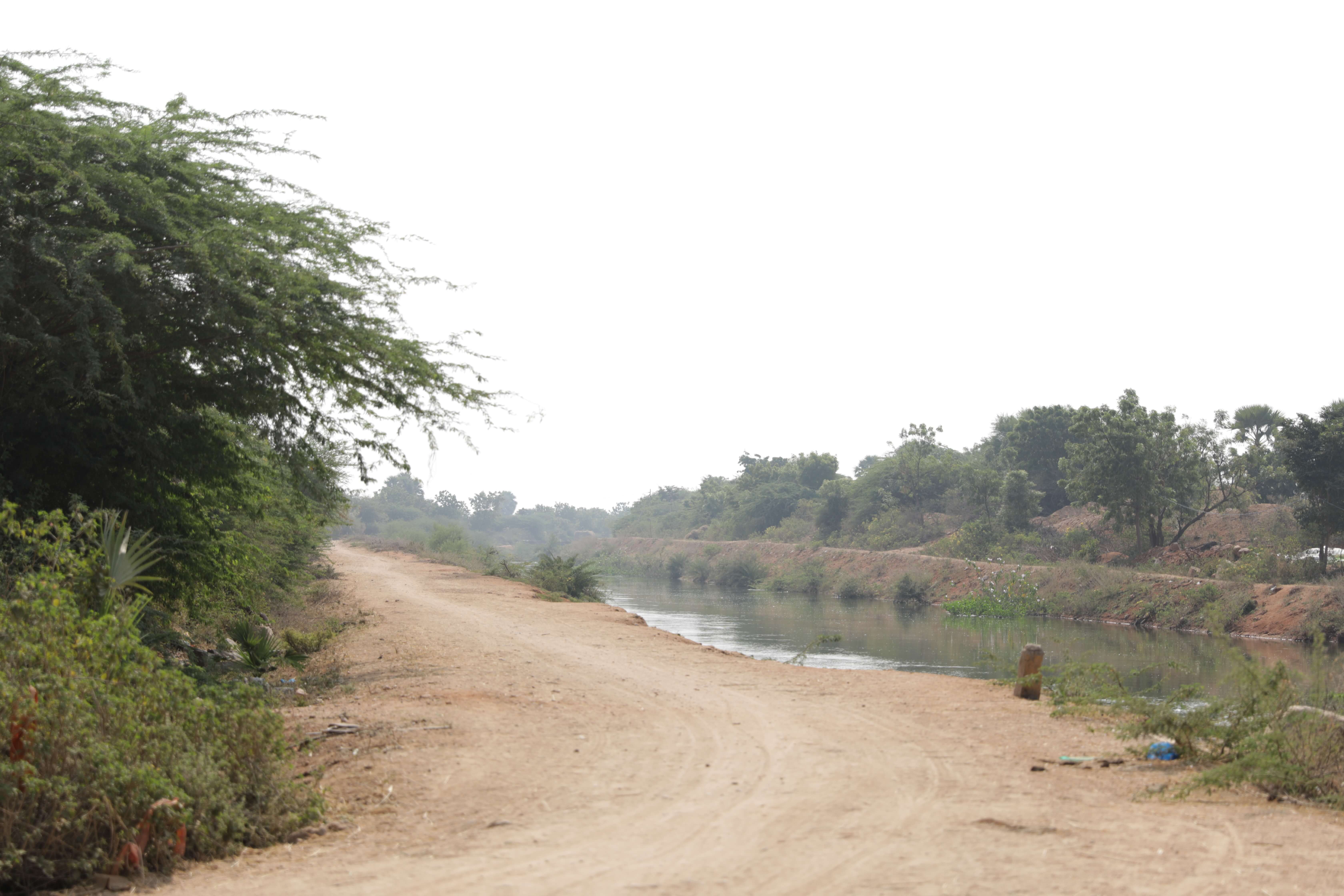How do lab experiments become practical solutions for villages? Kumar Gautam spent a month at the S3 Lab, Centre for Sustainable Technologies (IISc Bangalore) to find out. Under Dr. Yagnaseni Roy, Kumar learned low-cost, scalable approaches to remove arsenic from groundwater and returned with hands-on skills useful for community water projects.
What Kumar Gautham set out to learn
The internship aimed to teach practical methods used in arsenic remediation. Kumar’s learning goals included:
- Understanding bioremediation, adsorption and prefiltration processes.
- Gaining lab experience with experimental setups and safety procedures.
- Seeing how sustainable water-treatment technologies can translate to community use.
Work highlights: Experiments & practical skills
During the one-month placement Kumar worked across multiple experiments and pilot setups:
Bioremediation pilot (cow-dung biodigester)
Kumar helped run a pilot-scale biodigester using cow dung to detoxify arsenic: a promising, low-cost route that uses natural waste materials.
Adsorption beads (chitosan-metal mix)
He participated in synthesizing adsorbent beads made from chitosan and metal precursors. These beads are designed for the adsorption phase to capture dissolved arsenic.
Prefiltration unit design
Kumar helped design and assemble a layered prefilter (gravel → sand → cloth) to remove suspended solids before adsorption: an important step to protect downstream treatment.
Modeled landfill experiment
To study leaching risks, he assisted in setting up a landfill model that tests how waste can mobilize arsenic into groundwater.
Lab skills gained
Practical competencies Kumar developed include accurate weighing and volume measurement, operation of devices such as magnetic stirrers and syringe pumps, and adherence to lab safety protocols.
What stood out to Kumar
“I was fascinated by how natural materials like cow dung can detoxify arsenic — a reminder that low-cost, sustainable approaches can solve serious local problems.”
He also observed how prefiltration and adsorption work together in a full treatment chain; careful lab control leads to field-ready options.
Why this matters for communities
Kumar’s experience is more than academic. The techniques he worked on are directly relevant to village water systems:
- Low-cost bioremediation can be adapted where technical resources are scarce.
- Modular prefilters and adsorbents can be combined into practical household or community units.
- Lab-to-field transfers require both controlled testing and community piloting; exactly the bridge INREM supports.
Interview Transcript:
Interviewer:
What was the purpose of your visit to IISc Bangalore, that is, what was expected from this internship?
Kumar Gautam:
The main purpose of my visit to IISc Bangalore was to work at the S3 Lab, Centre for Sustainable Technologies, under the guidance of Dr. Yagnaseni Roy. The internship aimed to help me understand practical approaches to arsenic remediation from groundwater. I was expected to learn about different scientific methods like bioremediation, adsorption, and prefiltration and gain hands-on exposure to laboratory procedures, safety measures, and experimental setups related to sustainable water treatment technologies.
Interviewer:
What did you actually do there? Can you describe some specifics of your work?
Kumar Gautam:
During the one-month internship, I worked on several experiments connected to arsenic removal. One of the main tasks was conducting a bioremediation experiment using cow dung in a pilot-scale biodigester to detoxify arsenic. I also participated in synthesizing adsorbent beads from a chitosan-metal mixture to be used in the adsorption phase of the treatment process. Apart from that, I helped design a prefiltration unit consisting of gravel, sand, and cloth layers to remove suspended particles from groundwater before adsorption.
Additionally, I contributed to setting up a modeled landfill experiment to study the potential leaching of arsenic from waste materials into groundwater. These tasks helped me improve my practical lab skills like weight and volume measurement, using equipment such as the weighing balance, magnetic stirrer, and syringe pump.
Interviewer:
Was there anything really interesting that you learned during your time there?
Kumar Gautam:
Yes, definitely. What fascinated me most was how the bioremediation process can use natural materials like cow dung to detoxify arsenic effectively—showing how sustainable, low-cost approaches can address serious environmental problems. I also found it interesting how the adsorption and prefiltration processes complement each other in a full treatment chain. The whole experience gave me a deeper appreciation for how carefully controlled lab processes can lead to practical, community-level solutions.
Interviewer:
Any other thoughts or feelings you’d like to share, perhaps something that might encourage others to join such an exchange programme?
Kumar Gautam:
This internship was a highly enriching experience. It helped bridge the gap between theory and practice for me. I not only learned about arsenic remediation but also about lab discipline, teamwork, and the importance of sustainable technology in solving water quality challenges. I would definitely encourage others to be part of such exchange programmes, as they provide a rare opportunity to gain hands-on exposure to real-world environmental issues while learning directly from experts in the field.
